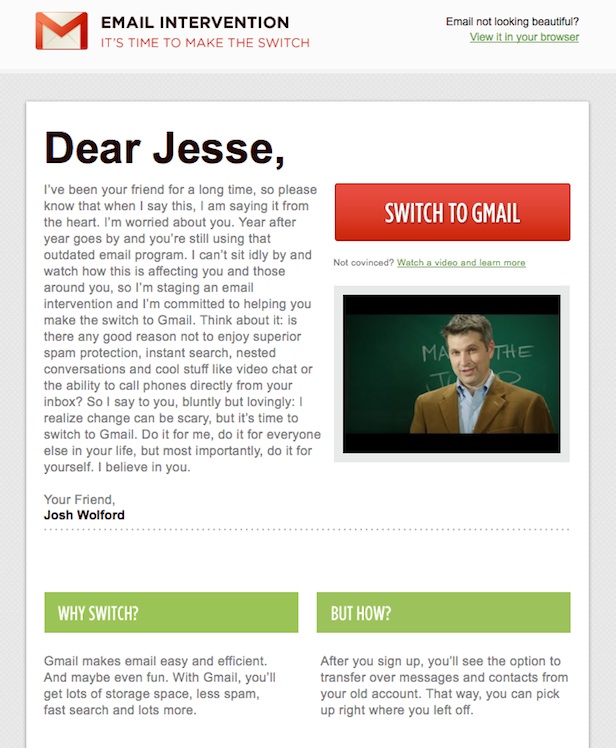Rumors about a potential Hulu acquisition have been running rampant. According to reports, Amazon, Dish, Google and Yahoo have bid or are close to bidding, and DirecTV is also reportedly considering submitting a bid. Valuations have ranged from $500 million to $2 billion.
Mike Sullivan, CEO of online video ad targeting platform Affine shared some thoughts on the potential impact of a Hulu acquisition on the online video industry.
“Currently, Amazon, Dish, Google, and Yahoo! are all in the running to purchase Hulu, but the implications for the online video industry vary greatly depending on who acquires the company,” he tells WebProNews. “These are four very different companies with four very different value propositions. For example, a Yahoo! buy would give Hulu the potential of remaining a premium content play with the addition of the Yahoo! sales team, while a Google buy would put strong technology behind Hulu and strengthen Google’s current on demand movie service. If Dish acquires Hulu it will probably discontinue current Hulu distribution channels like Hulu plus, but otherwise, Hulu has the potential of remaining the same. An Amazon acquisition wouldn’t change the online video space as much because they don’t yet have a viable ad platform. Across the board, a Hulu acquisition really only makes sense if Hulu’s license portfolio can be maintained.”
“Amazon would be a natural fit to acquire Hulu since it has started to compete with Apple on content distribution,” he adds. “TV and DVD sales are dropping and Amazon is currently confined to shipping products. A long-term content distribution mechanism would make a lot of sense. Amazon could also have a little more leverage with content providers as they already sell a lot of their content in traditional formats. Google, however, has the ability to spend lots of money towards the eventual discovery of a sustainable business model.”
A recent report from comScore found that Hulu is dominating in video ads.

“Hulu’s advertising is successful because it has great, highly produced content and maintains backing from major TV networks and production companies,” says Sullivan. “Hulu’s advertising is also successful because it’s included as an easy add-on to traditional campaigns. Media buyers know how to buy premium content from TV networks, and the TV networks know how to siphon off spend for Hulu advertising. For example, ABC may package a media buy to include a $20 million spot on ABC and another $1-2 million for impressions on Hulu. The media buyers are happy because they are advertising on a new, exciting online video channel but are only advertising on premium content.”
“Overall, a possible acquisition could result in a loss of distribution mechanisms and a possible fee increase for premium content,” says Sullivan. “Google lacks traction with Google TV but certainly has the cash to create a large TV sales team around their offering. An acquisition by Dish would be interesting as web-based consumer technology isn’t really in their DNA. They may struggle to find a viable business model the most of the aforementioned companies.”
Severing ties with co-owners Comcast, Disney, and Fox would likely result in a loss of available video content. “Severing these ties will result in massive loss of video content unless the acquirer can pay the increased premiums for the content. Of the companies in the running, only a few have the money available to buy the premium content at higher price. In addition to the higher price, all of the potential buyers will need to find a business model that can justify the price.”
On how Hulu’s competition with video streaming giant Netflix would be affected by the acquisition, Sullivan says, “Hulu is safe at the moment because it can provide recently run TV content while Netflix content tends to lag the current season. A Hulu acquisition by Amazon could help Amazon compete more directly with Netflix and Apple’s iTunes. Nobody views Google as a Netflix threat, though the number of hours of online video (YouTube) being watched is increasing dramatically. Dish is far more interested in competing with DirectTV then they are Netflix. Netflix remains device agnostic with many of their monthly streams going through game consoles whereas Dish’s business model revolves around consumers interacting with their own set-top-box.”
In other Hulu-related news, they officially launched a subscription service in Japan today, marking the first international expansion for the company.










 LinkedIn Privacy Step 3: Click on “Manage Social Advertising” in the “Account” tab you just enabled.
LinkedIn Privacy Step 3: Click on “Manage Social Advertising” in the “Account” tab you just enabled. LinkedIn Privacy Step 4: The Last Step is to un-check the option “LinkedIn may use my name, photo in social advertising.” Then save the changes.
LinkedIn Privacy Step 4: The Last Step is to un-check the option “LinkedIn may use my name, photo in social advertising.” Then save the changes.



